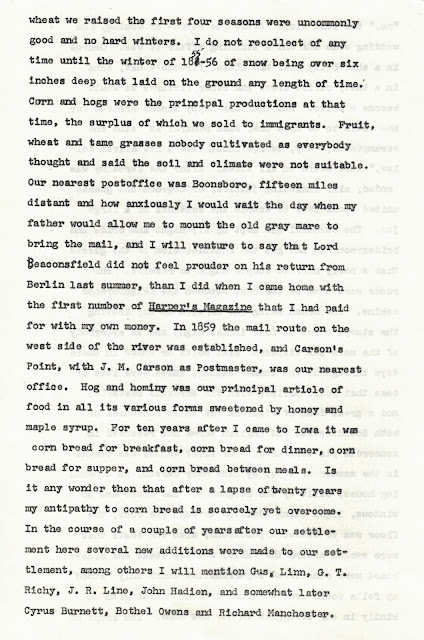A few weeks ago, I received an ancestry message from Sid's account. Instead of Sid writing to me with a new genealogy find or a question, it was a message from his widow, telling me of his death on 20 October 2021.
I never met Sid, but just as we mourn Beverly Linn Sturtz, we also mourn the loss of another family member in Sid Peterson.
Below is his obituary. Sid was the son of Lewis William Peterson and Anna (Bergman) Peterson, grandson of Florence Victoria (Fallein) and George William Peterson, great-grandson of Caroline (Linn) Fallein and Louis Fallein, and great-great grandson of John Linn and his wife Sara (Svensdotter) Linn.
We mourn the loss of another person from our tree. Sid was an excellent researcher and always happy to share information which he and I did for over 30 years. Thanks to Jim Carlson for providing the obituary for this post.
Sidney William Peterson, or Sid, to his loved ones, of Overland Park, Kansas, born in Boone, Iowa, on November 7, 1946, and raised in Stratford, Iowa, was the son of Lewis William Peterson and Ann Peterson.
Sid peacefully passed away on October 20, 2021, in the presence of his family and friends, at Advent Health, in Shawnee Mission, Kansas.
In 1965, Sid graduated from Stratford Senior High School, then joined the Air Force, where he worked as a Communications Specialist until his release in 1969.
Also in 1969, he wed Betty Stambaugh and remained married until her passing in 2001.
In 1971, he left the Air Force and went to work for United Telephone Company. He later started work at Sprint and retired with 31 years of service as an instructor and course developer. But realizing he wasn't one to rest on his laurels, he decided to go back to work and found himself at Lowe's, for the next 16 yeas. This position was right up his alley, because Sid loed woodworking and carpentry as a whole. He also loved Lionel model trains, genealogy, bird watching, fishing, traveling, and spending time with his family and extended family and friends.
In 2003, he met and eventually married Kimalee Chambers. In this marriage, he gained a new family and became a stepfather to her children, Patricia Everett-Lee and Reginald Chambers II. He later became a step-grandfather to their children Devan Lee, Deja Lee, Daliyah Lee, and Royalty Chambers.
In addition to his parents and first wife, Sid was preceded in death by his sister Barbara Whitson.
He is survived by his second wife, Kimalee Peterson, her children and grandchildren, and leaves behind his remaining sibling, Nolan Peterson and his wife, Kelli Peterson, of Stratford, Iowa; brother-in-law Bruce Whitson and family, of Des Moines, Iowa; his extended family, Kimalee's mother and stepfather, Cloretta Rosebrough and Normal Rosebrough, of Fairview, Oregon; Kimalee's father Vernon Robinson of Kansas City, Kansas; her brother Michael Grayson of Kansas City, Missouri, and his children; her sisters, Laura Shelby of Gresham, Oregon, and her children; Kenya Robinson of Phoenix, Arizona and her children, and Dana Robinson of Independence, Missouri, and her children.
During this phase of Sid's journey, his family and friends will celebrate his life at Porter Funeral Home. And per Sid's wishes, he will be laid to rest in his home town of Stratford, Iowa.
Lastly, Sid's family would like to thank everyone for their prayers, love, and support during this final chapter of his life. And, in lieu of flowers, the family prefers memorial contributions.
A Celebration of Life will be held from 5-7 pm Friday, October 29, at the Porter Funeral Home, 8535 Monrovia, Lenexa, KS.
A local Celebration of Life service will be held at 10:30 am, Friday, November 5, 2021, at Calvary United Methodist Church in Stratford, Iowa. Pastor Gina Spohnheimer will officiate. Interment will follow at Oakwood Cemetery, rural Stratford. Military Graveside Rites will be conducted by the Peterson American Legion Post #323 of Dayton, IA. For online obituaries and condolences, visit www. carsonstappfuneralhome.com




















































